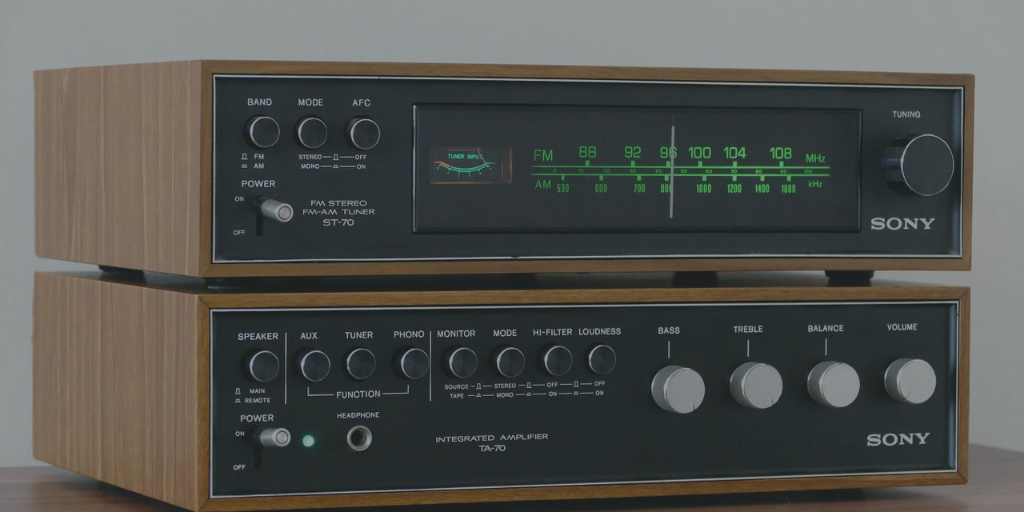Low amplifier volume can be caused by many things, but there are some that cause damage to the amplifier which causes low amplifier volume.
There are many things that make an amplifier sound low, whether it’s caused by a faulty preamp, faulty speakers, etc.
In this article, I want to share with you how to repair a low volume amplifier without you going to a professional Amplifier Repair Service.
3 Causes Low Volume Amplifier Problem
Speaker is Broken

A broken speaker can cause the amplifier low volume.
You can check the speaker terminal connector, maybe you can clean your terminal speaker connector.
You can get speaker terminal connector that range in price from $10-$20.
The preamp and power supply
a low volume amp can be caused by a preamp or power supply being broken.
If the sound volume on the amplifier does not come out, then check the preamp because the preamp plays an important role in delivering sound.
If there is still no sound, it’s possible that your power supply has a problem.
It is possible that the power supply you are using is under-voltage for your power amplifier.
Low sound amplifier can is generally caused by under voltage so that the work on some components is not channeled by under voltage.
For example, the final transistor performance is at least 25 volts (each transistor has a different volt) whereas when there is damage to the power supply the transistor cannot work.
In some cases, this often occurs due to the sound transistor amplifier or preamp in the driver not getting current according to the transistor or IC supply specifications so that the signal received by the final transistor will be small.
This can be proven by an amplifier that lacks power.
For example, being forced to handle many speakers, the sound will tend to distort.
This is because the transistor voltage drops.
Resulting in the transistor not meeting the required current. The stability can be adjusted by the driver.
Where the driver often takes the voltage through a limiting resistor, so that when there is a drop in the main voltage, the current flowing to the driver is automatically disturbed.
Check your amplifier settings

sound control such as tone control, equalizer, etc.
This is what often causes the sound of the amplifier to be small.
The first time to check every potentio, especially the volume is still good / not ringing.
Here you need to know the output line of the power amplifier.
The amplifier output line means the entrance to the power amplifier.
Touch it carefully with a screwdriver, if there is a loud “drut” sound in the speaker, it means the accessory has a problem.
If a sound “druttt” is weak or doesn’t come out, it means the power amplifier has a problem.
How do you fix a low volume amplifier?
And now that you know what’s causing your amp low volume, you can fix it by looking at the cause of the amp low sound.
It is possible that the low amplifier sound is also caused by a faulty amplifier.
Repairing an amplifier may seem quite complicated, because there are several things you should pay attention to when repairing your amplifier.
Some of the basic components include cables, which may fail to conduct electricity, fuses, which may need to be replaced, and switches and controllers which can cause problems.
The last option is to buy a new amp, here are some recommended for cars power amplifier you can buy this year.
How to repair amplifier low sound
Step by step repair amplifier low sound:
Step 1
Allow your amplifier to cool down before using it again. Set to volume zero.
Step 2
Restart the amplifier. If the “on” LED is on, your power supply is working fine.
Turn the volume knob slightly. If the sound comes from the speakers, but the quality or volume is poor, the power amplifier is working but not working optimally.
This could be a loose connection. Most likely the faulty element if no sound comes out of the speakers.
Step 3
To access the circuit board, remove the chassis cover. Check for obvious evidence of damage, such as a blown fuse or a failed transistor.
The color change will be brown. If a fuse or transistor is blown, replace it immediately.
Step 4
Check solder joints and wires. Trace the circuit wire back to the input and pull it carefully.
There may be a loose connection if it is loose.
Solder the loosely connected wire joints together using your soldering iron. Clean the remaining solder.
Step 5
Check the printed circuit board (PCB). Look for loose capacitors and resistors. The circuit will be shorted if any of these components are removed from it.
When the resistor fails to regulate the current, the circuit as a whole fails.
Step 6
Check resistors. After the first resistor in the signal chain, place your voltmeter probe right after it. Turn on the amplifier and set the meter to “resistance”.
The value of each resistor is printed on it. When you turn on the amplifier, the voltmeter should give a reading within a 5 percent variance of that number.
The resistor will not operate outside this range. If the value is zero, the resistor will be shorted.
Step 7
Replace the resistor after turning off the amplifier.
Remove the resistors by removing the solder joints at the base of the circuit board. Replace the component with a suitable replacement.
Step 8
Testing the output transformer To access the primary winding, remove the transformer housing cover.
Turn on the amplifier and connect your measuring wire to the transformer winding.
The output transformer should produce a reading similar to the power handling described in the user manual.
Zero measurement implies that the transformer coil is shorted.
Amp low volume video : How to Repair Sound Problem in your Amp
How to repair car amp
Conclusion
The point in finding the cause of the amp volume low is starting from the most basic things that can start from the initial possibility such as checking the cables and connectors / terminals to the most advanced is checking the components.
Thus, what is expected is the accuracy of the diagnosis that we make so that there is no risk of incorrect replacement of components that cause losses.